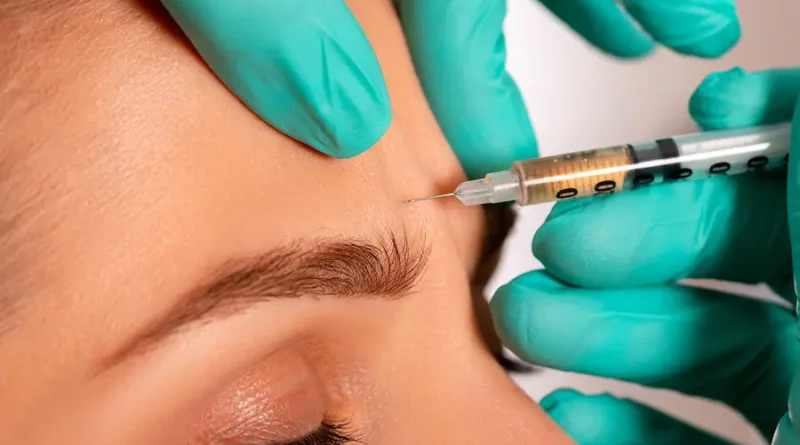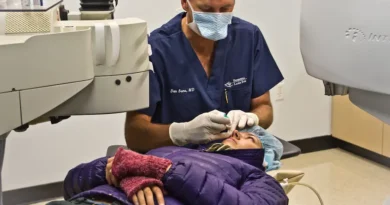Why Botox Isn’t Just for Wrinkles: A Look at Its Many Medical Applications
Botox, or botulinum toxin, is widely known for its cosmetic use in reducing wrinkles and fine lines, but its applications extend far beyond aesthetics. Over the years, medical research has uncovered numerous therapeutic uses for Botox, making it a valuable treatment for various health conditions. From chronic migraines to excessive sweating, Botox has proven to be effective in managing a range of issues, offering relief and improving quality of life for many patients. Here’s a look at some of Botox’s most notable medical applications.
1. Chronic Migraine Relief
One of the most well-known medical uses of Botox is for the treatment of chronic migraines. For people who experience migraines for 15 or more days a month, Botox injections have been shown to reduce the frequency and severity of headaches. By targeting specific nerve endings that trigger pain, BOTOX in Draper helps to block pain signals, providing relief for several months at a time. This treatment, approved by the FDA in 2010, has become a game-changer for many patients who haven’t found relief with traditional migraine medications.
2. Excessive Sweating (Hyperhidrosis)
Botox is also beneficial for managing hyperhidrosis, a condition marked by excessive sweating that may happen even in cool environments or without physical activity. By injecting Botox into areas with overactive sweat glands—like the underarms, hands, feet, or face—doctors can temporarily inhibit the chemical signals that trigger sweating. These effects typically last several months, enabling people to carry out daily activities without the discomfort or embarrassment of excessive perspiration.
3. Overactive Bladder
For people with overactive bladder (OAB) who haven’t responded well to other treatments, Botox offers another option. When injected into the bladder muscle, Botox helps to relax it, reducing symptoms like frequent urges to urinate and urinary incontinence. Approved by the FDA for treating OAB, Botox has been shown to significantly improve the quality of life for patients, reducing both urgency and frequency.
4. Muscle Spasms and Spasticity
Botox is frequently used to manage muscle spasms and spasticity, often in conditions like cerebral palsy, multiple sclerosis, or post-stroke muscle tightness. By relaxing overactive muscles, Botox injections help to reduce involuntary contractions and improve range of motion, allowing patients to regain some control and functionality. In addition to limb spasticity, Botox can be used to treat specific muscle issues, such as neck spasms in cervical dystonia, which can cause intense pain and abnormal head positioning.
5. Temporomandibular Joint (TMJ) Disorders
People with TMJ disorders often suffer from jaw tension, pain, and teeth grinding (bruxism). Injecting Botox into the jaw muscles can alleviate symptoms by relaxing these muscles, easing pain, and reducing involuntary clenching. For those suffering from chronic pain and discomfort due to TMJ disorders, Botox provides relief and supports more comfortable jaw movement.
6. Crossed Eyes (Strabismus)
Botox was originally developed for treating strabismus, a condition commonly known as crossed eyes. By relaxing certain eye muscles, Botox can help to realign the eyes, improving vision and eye coordination. This use of Botox has paved the way for other medical applications, demonstrating the toxin’s potential for safely treating muscle-related conditions.
7. Raynaud’s Disease
Raynaud’s disease, a condition characterized by reduced blood flow to the extremities, particularly the fingers and toes, can cause numbness, pain, and color changes in response to cold or stress. Botox has been shown to improve circulation by relaxing blood vessels, alleviating symptoms and increasing blood flow to affected areas. For people with severe cases, Botox can provide relief and reduce the risk of complications.
Conclusion
Botox’s reputation as a wrinkle reducer has overshadowed its role as a versatile medical treatment. However, its applications in chronic pain, muscle disorders, and conditions like hyperhidrosis and overactive bladder reveal its potential to improve lives in meaningful ways. By targeting specific nerves or muscles, Botox offers a safe and minimally invasive solution for a wide range of health issues. As research continues, we may see even more innovative uses for Botox in the medical field, demonstrating that it’s much more than just a cosmetic tool.



